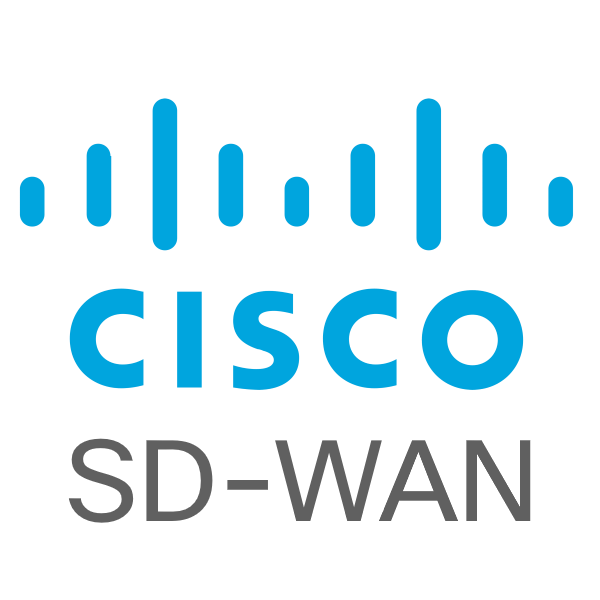Home / Shop
- Description
What you’ll learn in this course
The Implementing Cisco SD-WAN Solutions (ENSDWI) v2.0 course trains you to design, deploy, configure, and manage your Cisco® Software-Defined WAN (SD-WAN) solution in a large-scale live network, including how to migrate from legacy WAN to SD-WAN. You will learn best practices for configuring routing protocols in the data center and the branch, as well as how to implement advanced control, data, and application-aware policies. The course also covers SD-WAN deployment and migration options, placement of controllers, how to deploy WAN Edge devices, and how to configure Direct Internet Access (DIA) breakout. The course examines the different Cisco SD-WAN security options available, such as application-aware enterprise firewall, Intrusion Prevention System (IPS), URL filtering, Cisco Advanced Malware Protection (AMP), Secure Sockets Layer/Transport Layer Security (SSL/TLS) proxy, and Cisco Umbrella® Secure Internet Gateway (SIG).
The course lab environment is built using Cisco vEdge Cloud routers and Cisco SD-WAN 20.3 code.
This course helps you prepare to take the Implementing Cisco SD-WAN Solutions (300-415 ENSDWI) exam which is part of the CCNP® Enterprise certification. You will also earn 32 Continuing Education (CE) credits toward recertification.
Course duration
- Instructor-led training: 5 days in the classroom with hands-on lab practice
- Virtual instructor-led training: 5 days of web-based classes with hands-on lab practice
- E-learning: Equivalent of 5 days of content with videos, practice, and challenges
How you’ll benefit
This course will teach you to use Cisco SD-WAN to:
- Establish a transport-independent WAN for lower cost and higher flexibility
- Meet Service Level Agreements (SLAs) for business-critical and real-time applications
- Provide secure end-to-end segmentation for protecting critical enterprise compute resources
- Extend seamlessly into the public cloud
- Optimize the user experience for Software-as-a-Service (SaaS) applications
- Earn 32 CE credits toward recertification
Who should enroll
- System installers
- System integrators
- System administrators
- Network administrators
- Solutions designers
Technology areas
- Networking
- Software-defined networking
Course details
Objectives
After taking this course, you should be able to:
- Describe the Cisco SD-WAN solution and how modes of operation differ in traditional WAN versus SD-WAN
- Describe options for Cisco SD-WAN cloud and on-premises deployment
- Explain how to deploy WAN Edge devices
- Review the Zero-Touch Provisioning (ZTP) process and examine technical specifics for on-premises deployment
- Review the device configuration template and describe new features of device configuration templates
- Describe options for providing scalability, high availability, and redundancy
- Explain how dynamic routing protocols are deployed in an SD-WAN environment, on the service side and transport side
- Describe Cisco SD-WAN policy concepts, which includes how policies are defined, attached, distributed, and applied
- Define and implement advanced control policies, such as policies for custom topologies and service insertion
- Identify and implement advanced data policies, such as policies for traffic engineering and QoS
- Define and implement an Application-Aware Routing (AAR) policy
- Implement Direct Internet Access (DIA) and Cisco SD-WAN Cloud OnRamp options
- Describe Cisco SD-WAN security components and integration
- Describe how to design pure and hybrid Cisco SD-WAN solutions, as well as how to perform a migration to Cisco SD-WAN
- Describe Cisco SD-WAN Day-2 operations, such as monitoring, reporting, logging, troubleshooting, and upgrading
- Describe Cisco SD-WAN support for multicast
Prerequisites
You should have the following knowledge and skills before taking this course:
- Knowledge of Software-Defined Networking (SDN) concepts as applied to large-scale live network deployments
- Strong understanding of enterprise WAN design
- Strong understanding of routing protocol operation, including both interior and exterior routing protocol operation
- Familiarity with Transport Layer Security (TLS) and IP Security (IPSec) These recommended Cisco offerings that may help you meet these prerequisites:
- Implementing and Administering Cisco Solutions (CCNA®)
- Implementing and Operating Cisco Enterprise Network Core Technologies (ENCOR)
Outline
- Examining the Cisco SD WAN Architecture
- Examining Cisco SD-WAN Deployment Options
- Deploying WAN Edge Devices
- Onboarding WAN Edge Devices with ZTP and PnP
- Using Device Configuration Templates
- Exploring Redundancy, High Availability, and Scalability
- Enabling Service-Side and Transport-Side Routing
- Understanding Cisco SD-WAN Policy Configuration Basics
- Defining Advanced Control Policies
- Defining Advanced Data Policies
- Implementing AAR
- Examining Direct Internet Access and Cloud Deployment Options
- Exploring Cisco SD-WAN Security
- Designing and Migrating to Cisco SD-WAN
- Performing Cisco SD-WAN Network Management and Troubleshooting
- Examining Cisco SD-WAN Multicast Support
Lab outline
- Deploy Cisco SD-WAN Controllers
- Add a WAN Edge Router Using ZTP
- Deploy Cisco SD-WAN Device Using Configuration Templates
- Configure Cisco SD-WAN Controller Affinity
- Implement Service Side Routing Protocols
- Implement Transport Location (TLOC) Extensions
- Implement Control Policies
- Implement Data Policies
- Implement Application-Aware Routing
- Implement Branch and Regional Internet Breakouts
- Migrate Branch Sites
- Perform Cisco SD-WAN Software Upgrade

